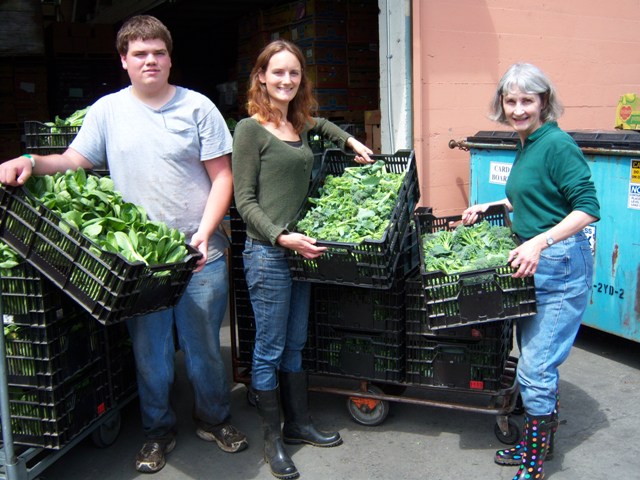Developing a Program

Before starting to glean at a farmers market, make sure to contact the manager of the market and get their approval. When you first arrive at the market, go around to the different grower booths with materials about your program and talk to them about donating. Always approach growers when they have no customers, which is most likely at the very beginning of the market. It is ideal when working with a farmers market to have a limited number of volunteers who consistently glean. This helps develop a relationship of trust between the donors and the volunteers. Also, make sure to have a tracking system in place, as many donors will want a receipt at then end of the season so that they can use their donations as a tax deduction. The more consistent and well structured the glean, the easier it will be for the growers and volunteers, and thus the more successful for the program.
After Hours Donations
It is not always possible to facilitate a person-to-person donation of produce. Coming up with a way to receive produce donations after hours is a nice way to open up different donation streams. Some farmers markets close later and would be amenable to dropping off produce in a refrigerated container. The same goes for community gardens and home gardens that harvest on the weekends. Coming up with a locking refrigerator or insulated box is one way that after-hour donations with known parties can happen. This is not always a possibility but if your site has the space for a donation drop-box it is a great way to make donors happy and collect produce when no staff is available.
Food Recovery Program Structure
2013HartfordPhotography-2304.jpg)
Farmers markets are set at the same time and place every week and provide a more predictable than gleaning. This gives you the opportunity to create a consistent and well-structured program. Such a system will make it easier for volunteers to glean and train other volunteers. This structure should include:
-
A specific food bank where food is dropped off, or which picks-up food
-
A source of boxes for the volunteers
-
A method for exchanging materials
Food Bank
Community Action gleaned from the local Downtown Mount Vernon Farmers Market. There is a food bank nearby, and was the destination of all food gleaned from the market. The farmers market is on a Saturday when the food bank is closed. After talking to the food bank we determined the best way to deal with this issue was to have a volunteer with a key to the food bank let our gleaning volunteers drop off food at the same time every week.
A Source of Boxes
The food bank itself was our source of boxes. After weighing and dropping off the food at the food bank, the gleaning volunteer took empty, unused boxes from the food bank and stored them in their car. Their car was big enough that they could keep them there without any interference.
A method for exchanging materials
At the beginning of the season the volunteer in charge was given all the papers they needed to track the food donations and their own hours for the whole season. The tracking sheet we used is here. At our office, there is a drop-off box, so they were able to drop off these papers at the end of the market, even though the office was closed. This overall system saved volunteer time. Further, because the system is so clear, when volunteers switched off weeks, the original volunteer was able to train the new one in very little time. Another potential option is having the volunteer email you the data once a week.


2013HartfordPhotography-2304.jpg)
